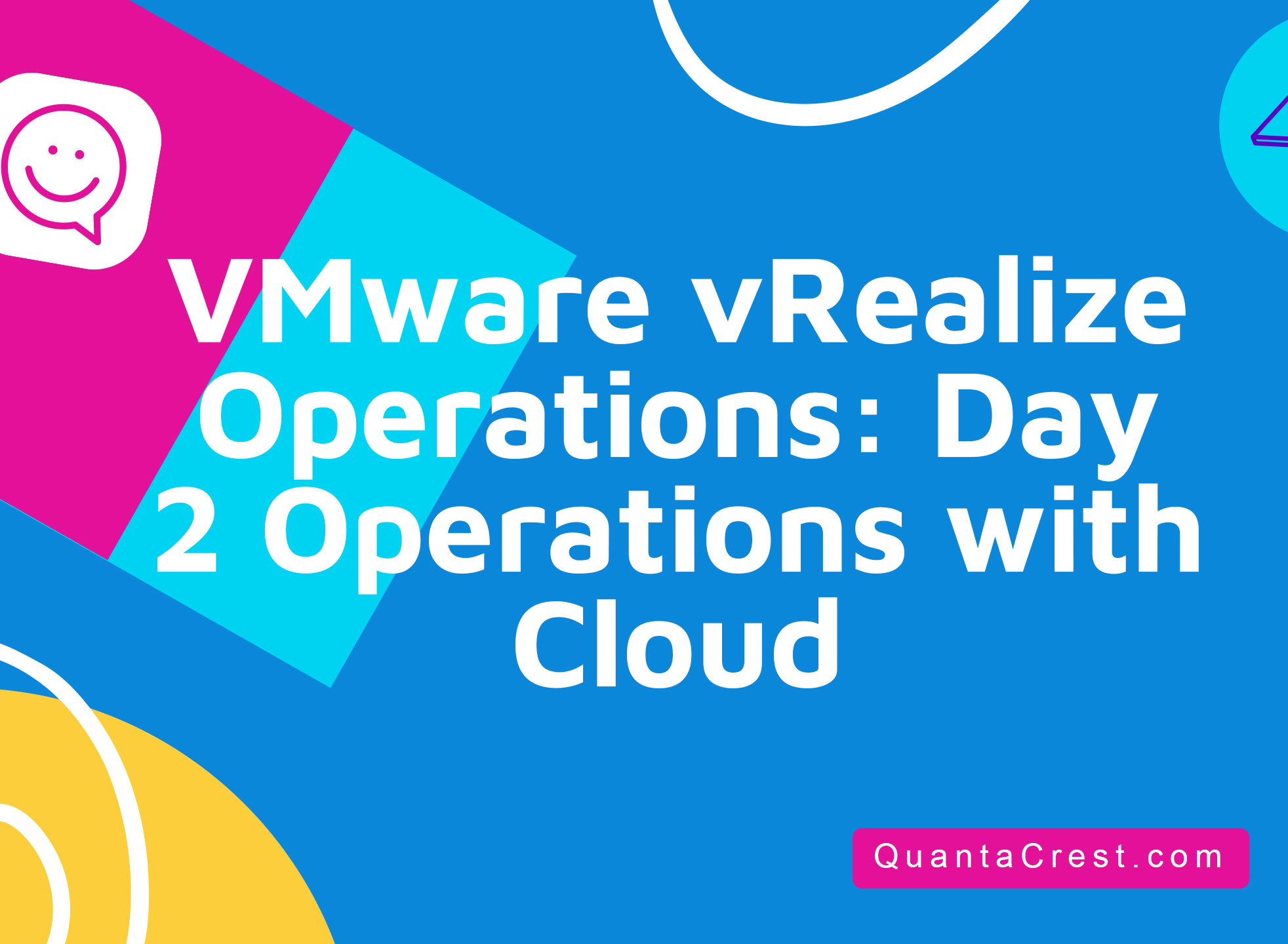VMware vRealize Operations: Day 2 Operations with Cloud
in VMwareAbout this course
Course Overview
This four-day course is for users of the VMware vRealize Operations Cloud product version. It includes how to use advanced capabilities like customizing alerts, views, reports, and dashboards and explains the architecture in VMware vRealize® Operations™.
This course explains certificates, capacity concepts, and workload optimization with real-world use cases. This course covers troubleshooting using dashboards and how to manage compliance and configurations. This course also covers several management packs and introduces VMware vRealize® Operations Cloud™.
In general, this course explains how to use and configure most of the new features and enhancements in version 8.1 and 8.2.
Product Alignment
VMware vSphere 7.0 U1
VMware vRealize® Operations Manager™ 8.2
Target Audience
vRealize Operations Cloud customers including experienced system administrators, system integrators, and consultants responsible for designing, implementing, and customizing vRealize Operations.Course Objectives
By the end of the course, you should be able to meet the following objectives:
- Identify features and benefits of vRealize Operations
- Use interface features to assess and troubleshoot operational issues
- Create policies to meet the operational needs of your environment
- Recognize effective ways to optimize performance, capacity, and cost in data centers
- Troubleshoot and manage issues and configurations using alerts and dashboards
- List the application monitoring enhancements
- Create custom alert definitions, reports, and views
- Create custom dashboards using the dashboard creation canvas
- Configure widgets and widget interactions for dashboards
- Create super metrics
- Set up users and user groups for controlled access to your environment
- Extend the capabilities of vRealize Operations by adding management packs and configuring solutions
- Monitor the health of the vRealize Operations cluster by using self-monitoring dashboards
- Discuss the vRealize Operations Cloud features
Course Content
1 Course Introduction
- Introduction and course logistics
- Course objectives
2 vRealize Operations Concepts
- Identify the components of the product UI
- Use tags to group objects
- Use applications to group objects
3 Certificate Management and Policies
- Describe vRealize Operations certificates
- Create policies for various types of workloads
- Explain how policy inheritance works
4 Performance Optimization
- Introduction to performance optimization
- Define the business and operational intentions for a given data center
- Automate the process of optimizing and balancing the workloads in data centers
- Report on the results of optimization efforts
5 Capacity and Cost Optimization
- Define capacity planning terms
- Understand capacity planning models
- Assess the overall capacity of a data center and identify optimization recommendations
- Recognize options for rightsizing virtual machines (VMs)
- Run what-if scenarios for adding workloads to a data center
- Run what-if scenarios to plan the migration of workloads to the public cloud
- Assess the cost of your datacenter inventory
6 Troubleshooting and Managing Configuration
- Describe the troubleshooting workbench
- Recognize how to troubleshoot issues by monitoring alerts
- Use step-by-step workflows to troubleshoot different vSphere objects
- Assess your environment’s compliance to standards
- View the configurations of vSphere objects in your environment
7 Operating System and Application Monitoring
- Recognize how the Service Discovery manager and Telegraf fit into the vRealize Operations OS and app monitoring
- Deploy the application remote collector
- Monitor the operating system and applications by using Telegraf
8 Custom Alert Definition
- Create symptom definitions
- Create recommendations, actions, and notifications
- Create alert definitions that monitor resource demand in hosts and VMs
9 Custom Views and Reports
- Build and use custom views in your environment
- Create custom reports for presenting data about your environment
10 Custom Dashboards
- Create dashboards that use predefined and custom widgets
- Configure widgets to interact with other widgets and other dashboards
- Configure the Scoreboard widget to use a metric configuration file
- Manage dashboards by grouping dashboards and sharing dashboards with users
11 Super Metrics
- Recognize different types of super metrics
- Create super metrics and associate them with objects
- Enable super metrics in policies
12 User Access Control
- Recognize how users are authorized to access objects
- Determine privilege priorities when a user has multiple privileges
- Import users and user groups from an LDAP source
13 Extending and Managing a vRealize Operations Deployment
- Identify the management packs that are available to your environment
- Monitor the health of a vRealize Operations cluster
- Generate a support bundle
- View vRealize Operations logs and audit reports
- Perform vRealize Operations cluster management tasks
14 vRealize Operations Cloud Overview
- Discuss the vRealize Operations Cloud features
- Discuss the vRealize Operations Cloud onboarding page
- Add cloud accounts
- Monitor the health of a vRealize Operations cluster
- APM Integration
Course Prerequisites
- This class requires system administration experience with VMware vSphere® deployments or completion of one of the following courses:
- VSICM - VMware vSphere: Install, Configure, Manage
- VSOS - VMware vSphere: Operate, Scale and Secure
Comments (0)






